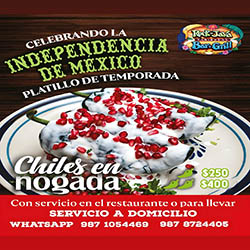How to Write Condominium Meeting Minutes
By Myriam López, Litigation Lawyers.mx

The General Assembly of Owners is the supreme body and highest authority of the condominium. It is held to discuss and resolve matters of common interest of the condominium. The minutes of the assembly is the certification or written testimony in which it is reported what happened, treated or agreed within an assembly as agreements, motions, impositions, determinations and resolutions. We will tell you, in detail, what the meeting minutes need to contain.
All minutes of a condominium assembly must compulsorily contain the following:
- Date and place where the assembly will take place.
- Start and end time
- Order of the day
- Signature of the president, secretary, members of the Vigilance Committee and participating owners.
- Complete list of attendees (updated) and signed.
- The agreements reached and the development of the points presented on the agenda, explicitly noting the results achieved in counting votes in favor and against and abstaining.
These minutes must be recorded in the Assembly Minutes Book by the secretary (in this case, the Administrator).
A successful Condominium Assembly will allow the community’s objectives to be fulfilled or resolved appropriately following the Law. This will enable the condominium owners to have greater participation in these sessions and propose initiatives that improve the well-being of all. Here are some tips for having a successful assembly.
1. Send summons in advance
The Law establishes that the convocation of the Assembly should be notified in a visible place in the vicinity of the condominium, at the front door, or by depositing the notice inside each property, or if the regulation allows it, by email.
2. Elect a moderator of the Assembly
Before starting the assembly, it is necessary to designate a moderator; In this case, it is recommended that said function be performed by a third party previously elected to vote by the participants of the assembly, which may be a joint owner.
This person will be responsible for presenting the list of points to address during the session and will give the floor to whoever requests it, making sure that the interested parties do not extend during their turn, ensuring that the motions are duly heard, analyzed by the attendees and discussed to reach a consensus or not.
3. Establish a table of contents

Before beginning the Assembly, establish a detailed list of the topics for discussion and the maximum time allocated per point. For example, agree to a total time of 30 minutes, with a limit of 10 interventions of 1-2 minutes for each subject. In this way, the Assembly will not be excessively long.
4. Designate a note taker
It is required to designate a person (usually the Administrator) to take notes on each of the agreements and resolutions discussed and established. He must be able to write down clearly and concisely the points to be included in the Minutes of the Assembly.
In that sense, everything noted during the session must be read at the end of the session to confirm that the information is correct.
5. Make administrative and financial reports
It is crucial to present the financial and administrative reports of interest to the assembly by the different committees in the session. The accounting and financial statements can be communicated to all owners, including the records in the bank book and the history of maintenance fees. After the assembly, they are sent to the community by email in case they wish.
6.- Establish the annual budget.
It is essential to establish the annual budget within the Ordinary Assembly. The majority of the members of the assembly should approve the financial commitments of the condominium. The Administrator will collect the condo fees; this must be done within the established periods, and payments will have to be made to the bank account assigned for such purpose.
7.- Establish terms of the sanctions in case of non-compliance.
The Assembly members will be able to discuss sanctions contained in the Regulation and the Condominal Law. The sanctions will be applicable if a condominium owner incurs in breach of the Law or the condo regulations. The sanctions may consist of fines, restrictions within the common use areas or those determined by the regulations, always trying to ensure that they are following the Law.
8.- Discussion of the application of sanctions.
Once there is a breach by a condominium owner to the devices that regulate the Condominium, he will be entitled to sanctions, which will depend on the type of action carried out and the number of recurrences of the conduct and the existing evidence. It will be necessary for the Administrator or the Vigilance Committee to specify the conditions and circumstances of the action contrary to the Condominium to allow the infringing owner to argue what suits their interests and offer evidence.
In case of fines for non-compliance in the payment of maintenance condo fees, it will be possible to impose interests at the rate set in the Condominium Regulations or conventional penalties, same as in the accumulation of more than two ordinary fees or an extraordinary one. Such an occasion will open the opportunity to file a lawsuit to request payment of the debts.

Everything related to sanctions and their imposition must be approved in the Assembly by a minimum of 75% of the undivided party. It must be carefully prepared so that the fine is not discarded in the courts since multiple legal principles regulate penalties.
If you have questions or require more information about sanctions, changes to the regulations or assemblies, schedule a free 30-minute phone call with us on our site www.litigationlawyers.com or follow us on our social networks LitigationLawyers.Mx and Quintana Roo Civil Law – Support and Advice (Cozumel, Playa del Carmen) on Facebook
Text and Translation by Text and Translation by MYRIAM LOPEZ CARDENAS
¿Cómo redactar un acta de asamblea de condóminos?
Por Myriam López, Litigation Lawyers.mx

La Asamblea General de Condóminos es el órgano supremo y máxima autoridad del condominio en donde se reúnen todos los propietarios o bien sus representantes legales. Se celebra previa convocatoria y en ella se tratan, discuten y resuelven los asuntos de interés común del condominio. El acta es de asamblea es la certificación o testimonio escrito en el cual, se da cuenta de lo sucedido, tratado o pactado dentro de una Asamblea como acuerdos, mociones, imposiciones, determinaciones y/o resoluciones. En este artículo le diremos a detalle qué deben contener las minutas.
Toda acta constituida en una Asamblea de Condominio debe contener obligatoriamente lo siguiente:
- Fecha y lugar en donde se efectuará la asamblea
- Hora de inicio y de término
- Orden del día
- Firma del presidente, secretario, integrantes del Comité de Vigilancia y condóminos participantes.
- Lista completa de los asistentes (actualizada) y firmada.
- Los acuerdos establecidos y desarrollo de los puntos presentados en el orden del día, anotando específicamente los resultados alcanzados en el conteo de votos a favor, en contra y abstenciones.
Esta acta deberá asentarse en el Libro de Actas de Asamblea por el secretario (en este caso el Administrador).
Una Asamblea de Condominio exitosa permitirá que los objetivos de la comunidad se cumplan o resuelvan apropiadamente conforme a la Ley. Esto, a su vez, posibilitará que los condóminos tengan mayor participación en estas sesiones, aportando iniciativas que mejoren el bienestar de todos. A continuación, se exponen algunos consejos para tener una asamblea exitosa.
1. Tener una buena convocatoria
La Ley establece que la convocatoria de la Asamblea sea notificada en un lugar visible en las inmediaciones del condominio, en la puerta principal, o depositando el aviso en el interior de cada propiedad; o en caso de así permitirlo el reglamento, por correo electrónico.
2. Elegir a un moderador de la Asamblea
Antes de dar inicio con la asamblea es necesario designar a un moderador; para este caso, es recomendable que dicha función sea desempeñada por un tercero previamente elegido a votación por los participantes de la asamblea, el cual puede ser un condómino.
Esta persona será la responsable de presentar la lista de puntos que deben ser discutidos durante la sesión y cederá la palabra a quien lo pida, asegurándose de que los interesados no se extiendan durante su turno, logrando que las mociones sean debidamente escuchadas, analizadas por los asistentes y discutidas para llegar o no a un consenso.
3. Establecer una tabla de contenidos
Previo al inicio de la Asamblea, se requiere establecer una lista detallada con cada tema a tratar, en donde se considere el tiempo máximo que se destinará. Por ejemplo, acordar un máximo de tiempo de 30 minutos, con un límite de 10 intervenciones de 1-2 minutos para cada asunto. De esta manera, se evita que la Asamblea se alargue.

4. Designar a un tomador de notas
Es requerido designar a una persona (por lo general el Administrador) que tome apuntes de cada uno de los acuerdos y resoluciones tratadas y establecidas. Deberá ser capaz de anotar de forma clara y concisa los puntos a incluir en la Acta de la Asamblea.
En ese sentido, todo lo anotado durante la sesión debe ser leído al término de esta para corroborar que la información sea correcta.
5. Realizar informes administrativos y financieros
En la sesión, es importante dar a conocer los informes financieros y administrativos que sean de interés para la asamblea por parte de los diferentes comités.
Por medio de este se generan fácilmente los informes contables y financieros de todos los condóminos, incluyendo los registros en el libro de banco y el historial de cuotas de mantenimiento, para que después de la asamblea sean enviados a la comunidad por correo electrónico en caso de que así lo deseen.
6.- Establecer el presupuesto anual.
Resulta fundamental establecer el presupuesto anual dentro de la Asamblea, dado que será el capital que la mayoría de los integrantes de la asamblea aprobará y aportará para los diversos compromisos financieros del Condominio, tomando como base para señalar dicha cantidad, la proporción de propiedad que le corresponda a los acreedores de los inmuebles. El monto será recaudado por el Administrador y/o Comité de Vigilancia preferentemente, o bien por quién la mayoría determine, esto deberá realizarse dentro de los períodos establecidos y los pagos tendrán que ser efectuados a la cuenta bancaria asignada para dicho rubro.
7.- Establecer términos de las sanciones en caso de incumplimiento
Los integrantes de la Asamblea podrán discutir acerca de las sanciones contenidas en el Reglamento y Ley Condominal. Las sanciones se harán efectivas en caso de que algún condómino incurra en incumplimiento, es así que, con esos elementos se impondrán aquellas sanciones determinadas en los dispositivos regulatorios del Condominio. Las sanciones pueden consistir en multas, restricciones dentro de las áreas de uso común o aquellas determinadas por la mayoría, procurando siempre que las mismas no sean excesivas y se encuentren apegadas a la ley.
8.- Discusión de aplicación de sanciones
Una vez que haya incumplimiento por parte de algún condómino a los dispositivos que regulan el Condominio, se hará acreedor a sanciones, las cuales dependerán del tipo de acción realizada y el número de reincidencias de la conducta y las evidencias existentes. Será necesario que el Administrador o Comité de Vigilancia, especifique las condiciones y circunstancias de la acción contraria al Condominio para darle oportunidad al acreedor de la sanción para que exponga lo que a sus intereses convenga y ofrezca pruebas.

En caso de multas por incumplimiento en el pago de cuotas para gastos comunes, será viable imponer intereses al tipo que se fije en el Reglamento Condominal, y/o penas convencionales, mismas que en caso de acumulación de más de 3 cuotas ordinarias o una extraordinaria, abrirá la oportunidad para acudir a una instancia legal para solicitar el pago de los adeudos.
Todo lo relativo a las sanciones y su imposición deberá ser aprobado en Asamblea por un mínimo del 75% del indiviso y requiere ser cuidadosamente preparado para que la multa no sea desechada en las cortes ya que las multas son reguladas por múltiples principios legales.
Si tiene dudas o requiere mayor información sobre sanciones, cambios al reglamento o asambleas, programe una llamada telefónica gratuita de 30 minutos con nosotros en nuestro sitio www.litigationlawyers.com o siganos en nuestras redes sociales LitigationLawyers.Mx y Quintana Roo Civil Law – Support and Advice (Cozumel, Playa del Carmen) en Facebook.
- Humane Society Cozumel Smooch Pooch - September 12, 2025
- September Cozumel 4 You NEWS - September 12, 2025
- AA Cozumel2025 - September 12, 2025




















Leave a comment